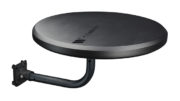You might have read several articles on this blog telling you to rescan every month if you have an antenna. Usually this is a 5-minute process and it’s easy. However if you have multiple TVs or if you have older TVs, the time can add up. It might be enough to get you really frustrated. So you might be asking,
Who’s dumb idea is this?
I hear you, folks, I do. Some people really do have to deal with this practically every month and it’s not likely to be over until next summer. The FCC has set a schedule, they’re the ones to be upset with.
You’re rescanning for channels because TV frequencies are moving. If you take a look back in history, TV broadcasts used to be very hard to control. The original rules for TV channels said that no two stations could be next to each other on the spectrum. In other words, if you had a channel 8, you couldn’t have a channel 9. Having channels next to each other they would interfere.
Not only that, you couldn’t have stations in neigboring markets that were adjacent. So, Detroit could have a channel 7, but Toledo or Flint couldn’t have a channel 6 or 8.
SIDEBAR: No you’re not remembering wrong
If you remember having a channel 4 and channel 5 when you were growing up. Or, a channel 6 and 7. You’re not wrong. There are gaps between 4 and 5, between 6 and 7, and between 13 and 14. So, you could have adjacent channels in those three very specific cases.
It’s the 21st century, broadcasting’s all digital now.
The rules for adjacent channels meant you needed a LOT of channels. Think about how hard it was to make sure no one had channels that bumped up against each other, and that’s why at one point there were 82 channel allocations.
Today with digital broadcasting you just don’t need those. Ten years ago the “band plan” was reduced to just channels 2-51 (minus channel 37 which was used for radio astronomy.) The remaining frequencies went to cell phones. Now, it’s all happening again.
Channels 38-51 are going away and all the remaining broadcasters are crowding into channels 7-35. In some markets, they will be using channels 2-6 but since those channels require a very large antenna, most broadcasters stay away. The exceptions are cities where channels have lived on the same frequency for decades. (Philadelphia’s WPVI is an example.)
Why the @#$@ is it taking so long?
The FCC decided that all these changes shouldn’t take place the same day. They came up with a ten-step plan to move channels slowly. This made it easier for broadcasters. I think the original idea was that each city would have all its channels move on the same day, but that didn’t work out. Some cities have channels in several different “phases” and if you’re between cities it gets twice as bad.
I know it seems very customer-unfriendly. No denying that. But different broadcasters told the FCC that they needed different amounts of time. The alternative would have been waiting until 2020 and then everyone doing it all at once, in one massive day of nationwide chaos.
Why would 2020 have been so bad?
The channels that are being given up are going straight to cell companies for 5G cellular. As much as we all love our antennas, there are a lot of people who love their phones even more. Another purpose for this plan was to feed those frequencies to cell operators as quickly as possible.
Remember that 5G doesn’t just bring better cell data speeds but also brings better coverage in many cases. The 5G hardware doesn’t make cell service better by itself. It’s really more about cell companies adding the towers they need and upgrading the ones they have.
When will this craziness be over?
You can figure out when you’re all set using the tools in this article. For some lucky folks, they’re finally all set. For others, there are a few months left. However, unless plans change, the last rescan will take place next summer and that should be all you have to worry about until NextGen TV (the newest television standard) comes in. That could be in 2025, so at least you’ll get a little break from things.





